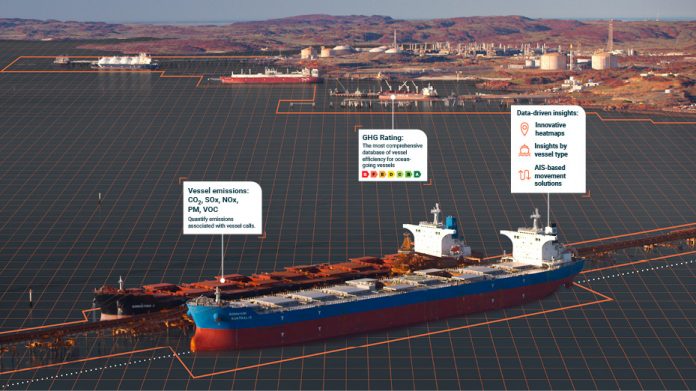Measurements of maritime emissions are a topical and controversial subject, disliked by vessel operators and lauded by regulatory authorities and environmentalists. Rightship has added to the mix a new Maritime Emissions Portal (MEP) that records vessel pollution at the berth.
Consternation caused by the measurement of vessel emissions a decade or so ago meant the company received “a fair bit of feedback,” from owners, according to Kris Fumberger, Rightship’s global sustainability manager, based in Melbourne.
According to Fumberger, Rightship’s aim with the latest system is to put knowledge and power into the hands of the port operators to make changes that will ultimately reduce emissions.

The system itself combines automatic identification system data with RightShip’s vessel insight information, allowing the portal to estimate vessel emissions at the berth and provides a heatmap that indicates hotspots, revealing where the environmental impact can be reduced.
In its current form, the portal is, “designed to understand all vessels that call and the emissions associated with that, which is normally a long drawn out process, the MEP puts the power and data in the port’s hands,” he told Container News.
Conceding that much of the port pollution is caused by the landside operations, rather than vessel emissions, Rightship says that its bread and butter work focuses on the vessels. “We have the largest database in the world, the IMO imitated our database, but it’s up to the ports how they use the data, it can work in a positive way, they can work together, with ship operators, to reduce emissions at ports,” said Fumberger.
Asked if the MEP will develop in the future Fumberger said that may be possible in the future, pointing to work that the company had done with Canada’s Vancouver Port, but the first step was to build up scale over the next one or two years. Development of the system would be further down the line.
The research the company had completed with its partners at the bulk port in Pilbara Western Australia and the Prince Rupert Port Authority in Canada, along with data from US West Coast ports had allowed the company to develop the portal. Now Geelong in Melbourne, Victoria, and some other Australian ports were looking at the system.
“If we signed up 10-15 ports it would be a success, but we have many port customers already so we’re hoping to go way past that,” explained Fumberger.
In essence, the system is designed to reward the vessel operators that are most efficient and conversely, though not explicitly, to penalise the least efficient operators.
Nick Savvides
Managing Editor







